Composer Nathan Barr has found great success in films and television by using unusual instruments—and playing many of them himself—to craft intense scores for horror movies like Eli Roth's Cabin Fever and Hostel, and TV series like True Blood and The Americans.
In recent years, Barr performed and recorded his gourd cellos, glass armonicas, and bowed pianos in a garage-turned-studio just behind his house, an enviable enough situation when compared to your average personal studio. But recently, Barr has significantly leveled up—not just in terms of the square-footage of Bandrika, his brand-new, custom-built studio, but in the eclecticism of his instrument collection.
During the silent film era, major movie theaters used elaborate organs—pipe organs outfitted with all manner of extra instruments and noisemakers—so that the accompanist could make as varied a soundtrack as possible as a movie played. Some surviving organs from this time can still be found in places like the Chicago Theatre or the Fox Theatres in Atlanta and Detroit.

Hollywood's Fox Studios had its own installed in 1928, at the tail-end of the silent era. A Wurlitzer that included 1,500 pipes and plenty of additional bells and whistles, it would end up being heard in the musical scores of later movies like Bernard Herrmann's for Journey to the Center of the Earth and Rodgers & Hammerstein's The Sound of Music.
About six years ago, Barr had the opportunity to buy this Fox Studios Wurlitzer, which had fallen into disrepair since its Golden Age heydey. While working to restore it, he began making plans for where to keep such an enormous instrument—designing Bandrika to perfectly house and record it.
This new studio opened just seven months ago, but the organ's 21st century film debut will already be in movie theaters this weekend, with The House With a Clock in Its Walls, the latest collaboration between Barr and filmmaker Eli Roth. Below, we talk to Barr about the restoration of the Wurlitzer, the building of his new studio, and how he's trying to stretch the possibilities of this already elaborate instrument.
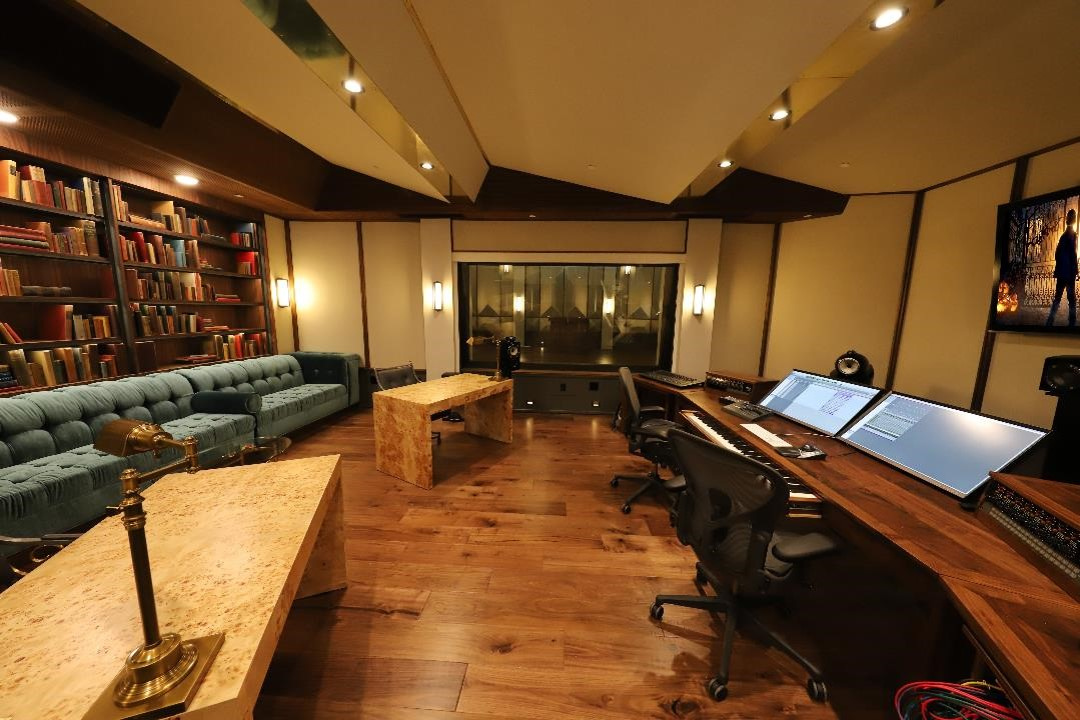
When did you first come across the Wurlitzer? Why was it important to you to get it back in working order?
I did a show called Hemlock Grove about six years ago for Netflix and something about that reminded me of this place I visited as a kid, this weird museum in Wisconsin called The House on the Rock. Amidst their collection of oddities were these mechanical musical instruments from the 20th century. So that show kind of kicked off this whole idea about doing some research down this very deep rabbit hole of mechanical musical instruments.
I had started thinking about building a recording studio that was really unique in the world, and I had always been fascinated by pipe organs and in particular theater organs, because that sound of a theater organ and its association with very early film history was always so magical to me. The theater organ world is miniscule, so as I started to go to concerts and meet some of these people I asked were there any available. Someone told me that this guy up in Reno who had taken care of the Fox Studios Wurlitzer as a kid with his father had that instrument and might be willing to sell it.
I was floored—I didn't even know the major studios in Hollywood all had pipe organs back in the day, but, sure enough they did. I went up to Reno and he opened up, basically, this warehouse stacked from floor to ceiling with crates, and I was just thinking, Holy shit this is huge. [Laughs.] So, I didn't even know where to begin, but at that exact moment it's like, I don't care what I have to do, I have to do this. It was so incredibly special and such a unique instrument.
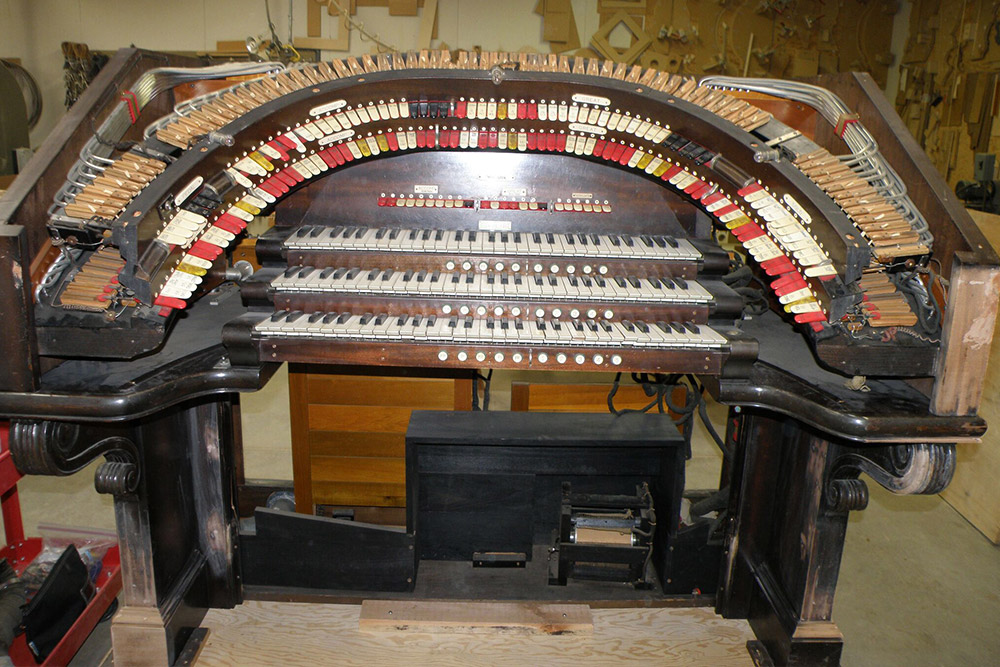
What year was that and how long did the process take? Did you do the work yourself or did you have to find a specialist who could bring it back to life?
The process—from the time I bought it until the time it was installed—was about six years. So, the restoration process was about five years long and the gentleman I bought it from, a guy named Ken Crome, he is one of the world's great theater organ restoration guys. That's actually his business. He's a pipe organ guy. The deal with me purchasing it from him was that he and his team were going to restore it, which was great, because, literally, there are like two or three guys in the world who are at the top and he's one of them.
It took them five years to restore, and it was a lot of collaboration between me and them, my architect, my acoustician, because you know, this instrument physically occupies six rooms in the building. We literally reconfigured the entire building around this instrument. There are three rooms that are devoted to the mechanical components and there are three rooms devoted to the musical components.
So it's an enormous undertaking, well beyond anything I ever imagined. The outcome, thankfully, is not only do we have an extraordinary sounding scoring stage, we have probably the mechanically quietest theater organ in the world. It's really just been a pleasure to start to hear it come to life in the space.

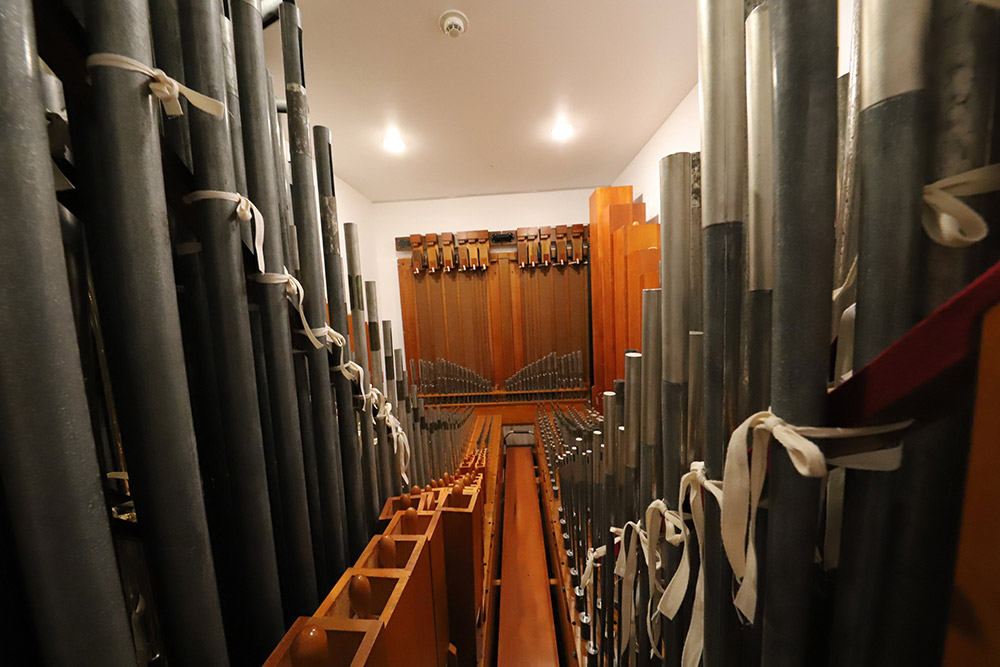
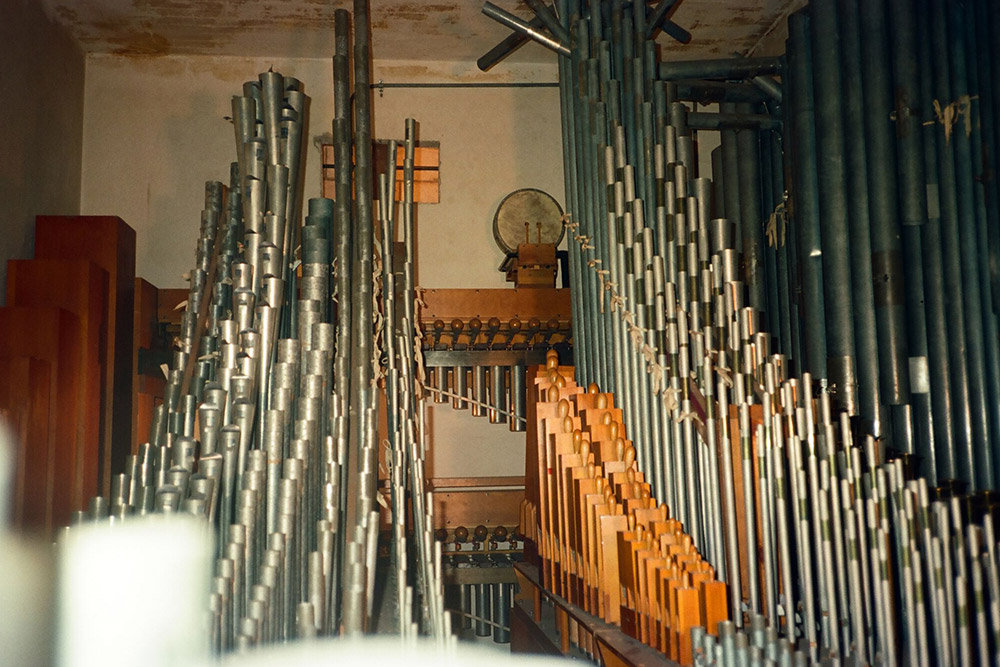
When did you start discussing with Eli Roth The House With a Clock in Its Walls—and when did you decide that the Wurlitzer was going to play such a large role in the score?
It's so interesting, when I built this—you'd ask before why I thought this was important to bring back. This is basically the earliest idea of a synthesizer, right? You're taking a keyboard and air and pipes and you're getting them to sound as much as you can like an orchestra—and yet it doesn't sound like an orchestra. It has a completely unique sound. And as a composer, I heard layers and colors in that instrument that I thought, Wow. This is for nostalgia and for the original kind of music this instrument was intended to play—but I hear well beyond that a use for this instrument that I think would be extraordinary.
Eli contacted me probably four months or five months before we completed the studio, so basically six months ago from now. He told me what the film was, and I went and saw it and was like, Oh my God, this was like a perfect setting for this instrument to become a part of the score. I couldn't believe it. When I installed it, I didn't know how people would react. I didn't know where I'd get it into a project. And yet here was this amazing film that could feature it. The entire end credits of this film, which is six minutes long, is just the theater organ.
I incorporated it into the score both as like a classical-sounding organ, which it can do, and also in its traditional sense of a theater organ, which is a very different sound from what most people think of as a pipe organ.

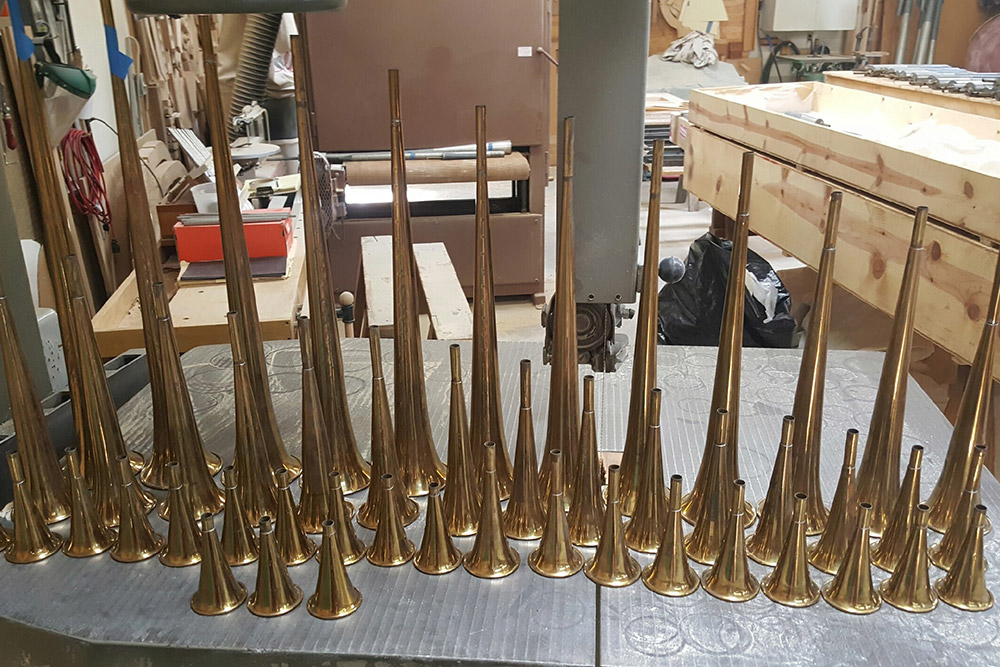
How did you lean into those idiosyncrasies? How did the not-quite-brass sounds, for example, change how you were writing the brass sounds?
When I wasn't using it as a straight classical organ, the thing that I really enjoyed doing was just feathering in portions of the organ with the strings. After we recorded strings, we went into the space and sort of chose a couple spots to feather in some of the sounds that might enhance and complement the strings or the brass or whatever it was.
Keep in mind, this is the tip of the iceberg—we were on a tight schedule, so we only got to experiment with it in a really small way, but it was still pretty vindicating to hear that the results can be extraordinary.
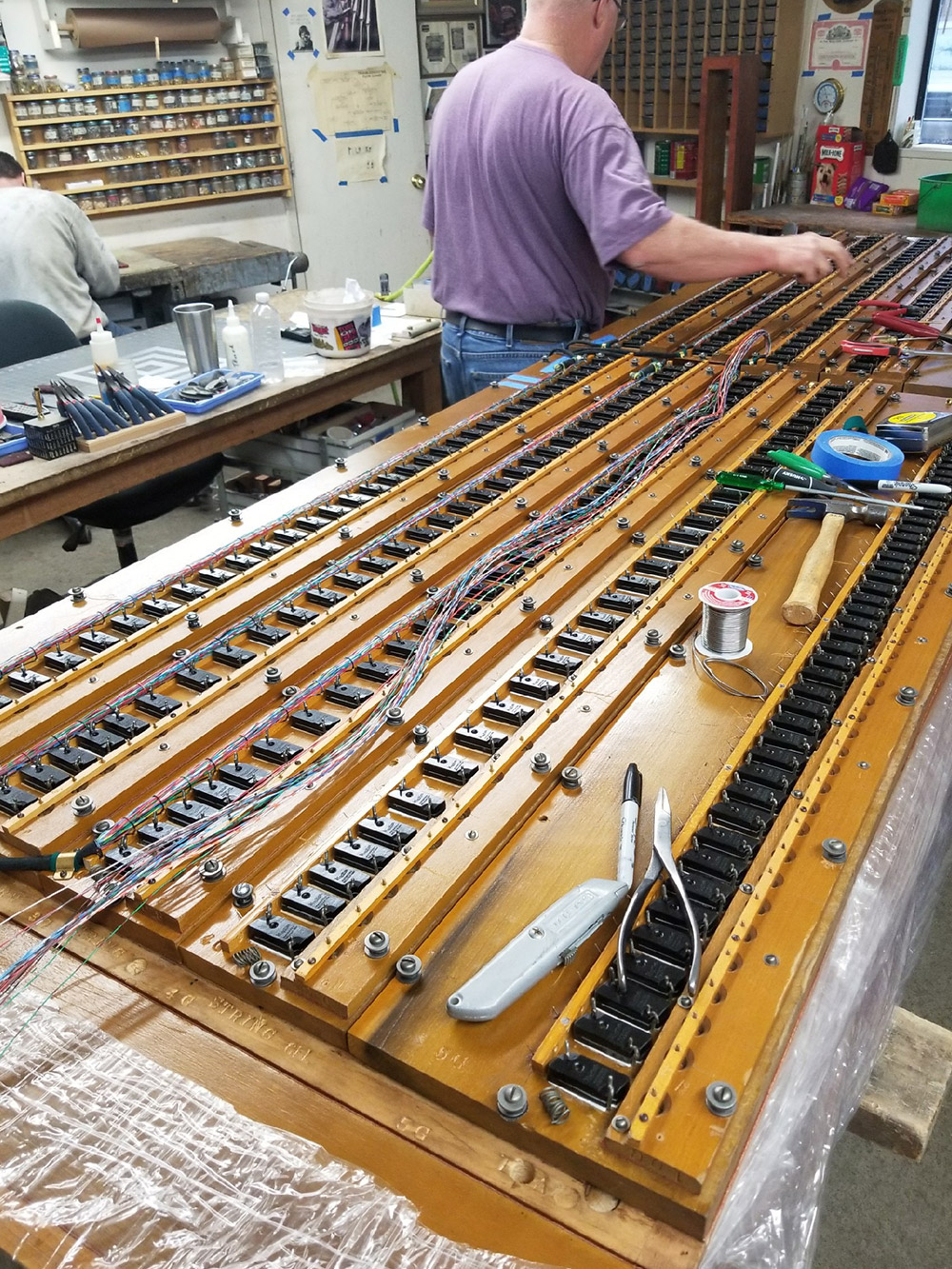
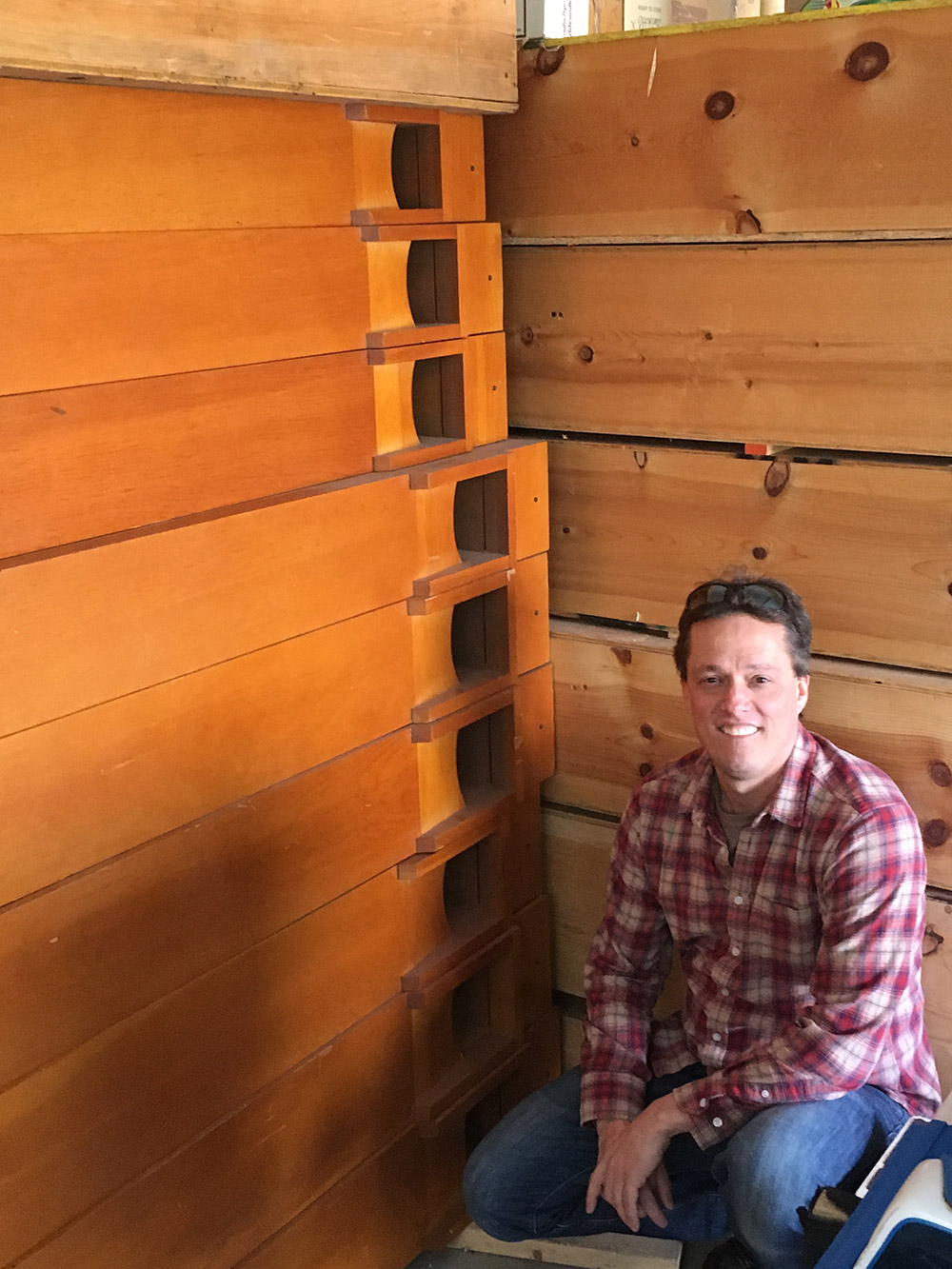
When you said you went into the deep end of research, I'm sure you studied how other composers like Bernard Herrmann used this Wurlitzer. Did this whole process—the research and using the instrument to score a film—change how you viewed their work with that same instrument?
Basically all of the studios had theater organs back in the day in the '20s and '30s, so Warner Brothers had one—actually the sister to this organ, a Wurlitzer—Paramount had one, United Artists had one, Universal had something called a Robert Morton. Everyone had an organ. And the irony of all of these instruments is that they were theater organs designed to accompany silent film, so being a church organ was a little bit left-of-center for what they were built for.
So to answer your question, 99 percent of its use in Bernard Herrmann scores, John Williams scores, Jerry Goldsmith scores, Alex North scores is always as a straight church organ. So that's where I saw an opportunity. Basically, I saw this instrument as being underutilized for its potential—but who would have the time to come in and book a studio to experiment to their heart's content with the sounds that it's possible of creating? And the answer is, like, no one. You know, there's never time for that.
So I kind of departed where I could from the traditional use its seen in the past and started to experiment and, again, it's just the tip of the iceberg.
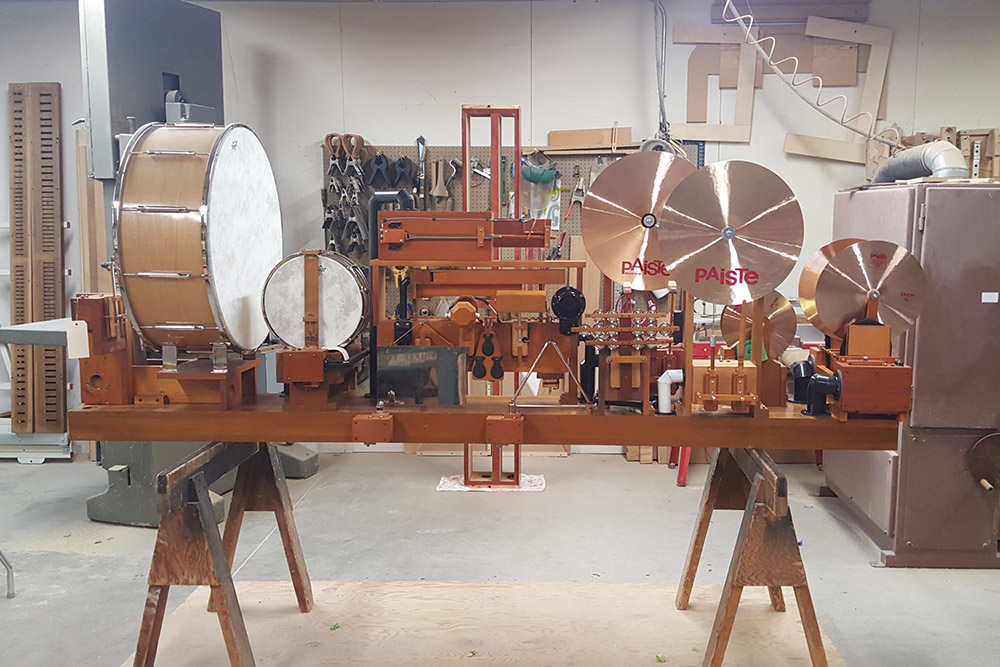
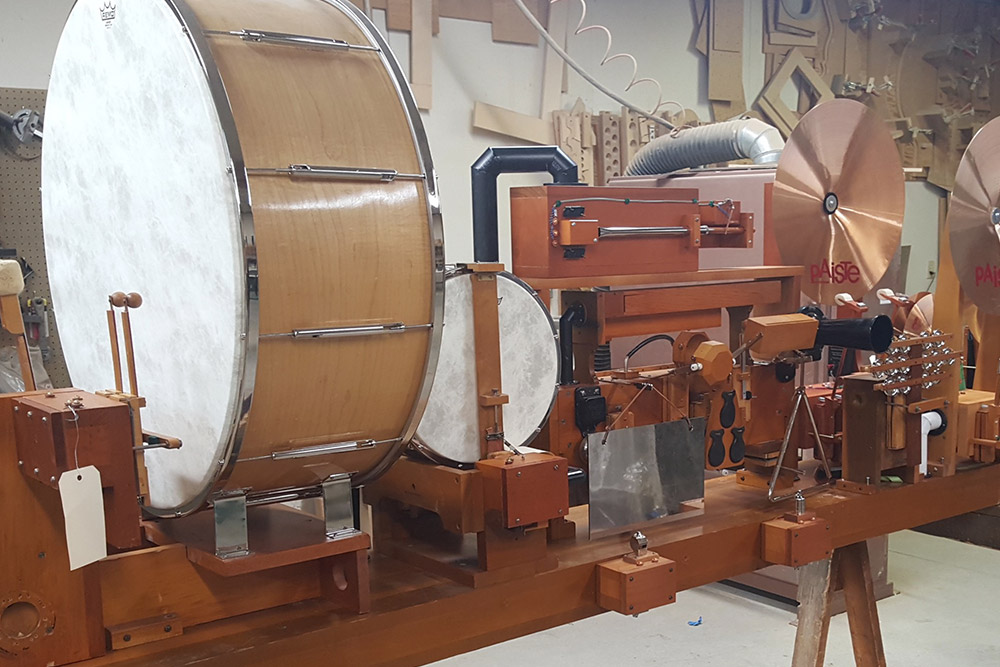
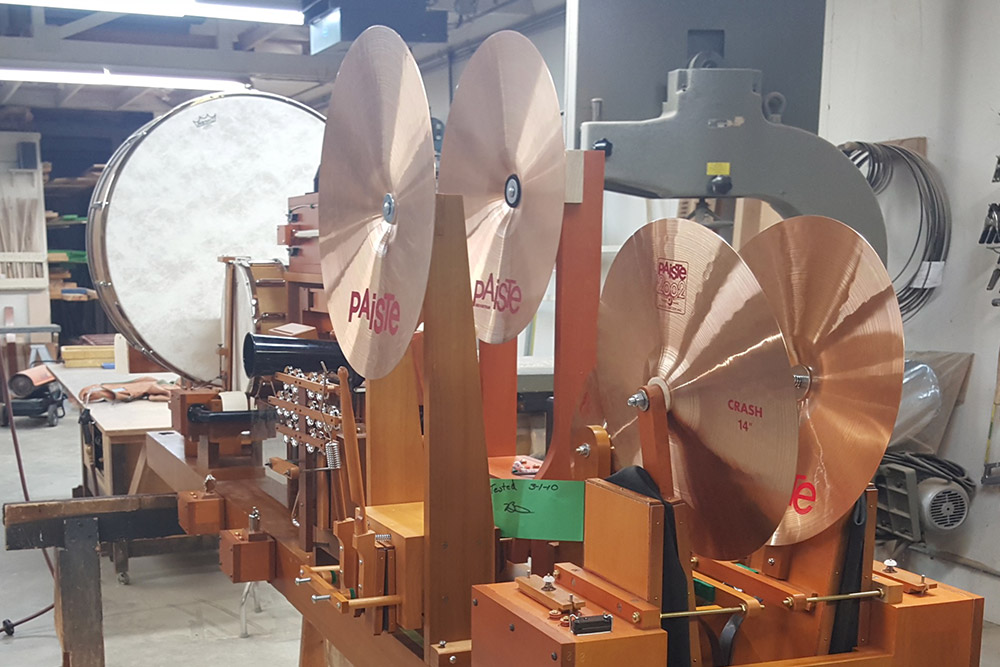
In just looking at these photos, there's that huge percussion and auxiliary noise maker section. Did you use that in the score?
Absolutely. We used the celeste—it has an actual celeste in it. We used the xylophone, the glockenspiel. It comes with an upright piano—that I added from another organ—but it actually has an upright piano. We used the gong. So yeah, we used quite a few of the percussive elements as well.
That's another thing that is intriguing and exciting to people is, if I sit down and I'm just playing in the middle room, the middle chamber of the organ, there's actually no pipes in there—it's all the percussion and stuff. People really have to expand their idea about what a pipe organ is when you approach a theater organ.
Right, and all that stuff is controlled at the console?
Everything is controlled by a single player, so these instruments were built to give a single organist maximum ability to emotionally complement a silent film. The genius of these instruments was they wanted to make as much as possible playable by one performer—so there are all sorts of little tricks that they came up with.
For example, you can play the keys on one of the keyboards, one of the manuals, and if you press a little harder you can tell it to play a different sound. So, if you're playing chords you can be playing chords in your left hand and then every other beat press down harder and you get like a cymbal and a snare drum, or a bass drum—it's really just a genius invention.
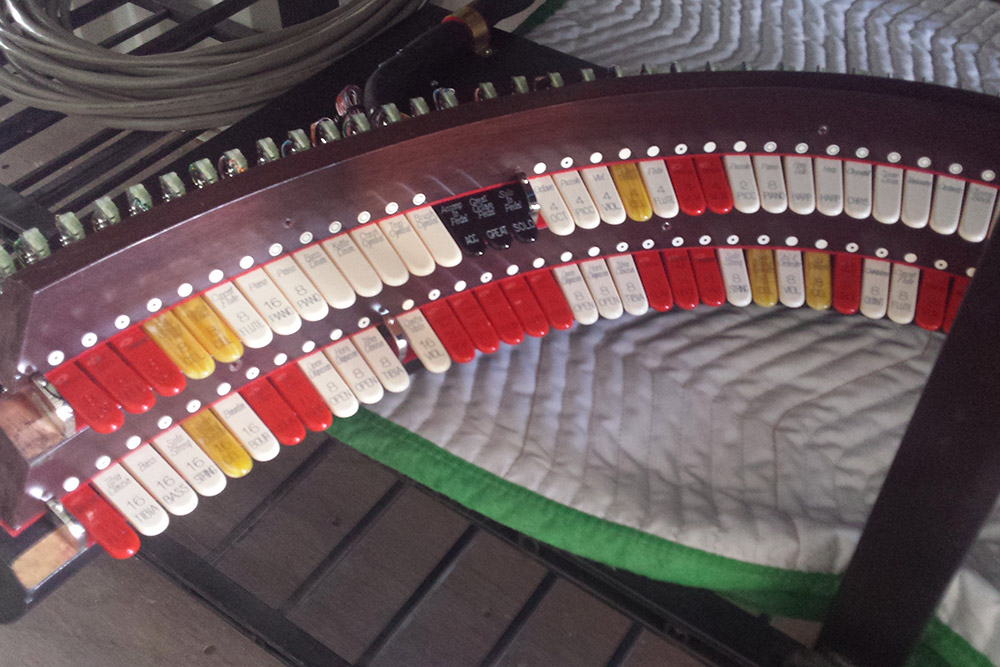
How do you map that out? How do you tell it which instruments to be in those situations?
You know those colorful stop tabs that you see on organs? Basically, that's how you do it. You have what's called a stop rail. It's like a horseshoe shape when you're sitting at the organ, and there are two levels of stop tabs. When you press those down in a certain area of the stop rail then that keyboard will play that sound. Now, the trick—I want beyond the capability of a single player, so we are currently working on integrating it with Logic, which is going to be a bit of a trick. [Laughs.]
What's the plan for that?
There's a relay software system called Uniflex that has been around for maybe 40 years, which is a huge step up from the original Wurlitzer components, because when someone sits down at the organ you can hit record and every single motion of the organist—keys pressed, pedals used, stops changed—gets recorded as media information. When they're done you can hit play and the organ plays it back likes on a player piano—you literally capture exactly the performance. It will be exactly the same.
In addition to the Wurlitzer theater organ, Barr used these orchestral software libraries, plugins, and microphones to create the music for The House With a Clock in Its Walls:
- Strings: Spitfire Audio Chamber Strings, Cinematic Strings 2.0, Cinematic Studio Strings
- Brass: Cinebrass, Berlin Brass - Muted Brass
- EQ: Logic's stock plugin
- Compression: Rarely used, but when we do it will be an outboard UAD 1176 or Logic's stock compressors.
- Reverb: Altiverb 7, Valhalla Shimmer, and Valhalla VintageVerb
- Sound design: Soundtoys 5 (Decapitator, Echoboy Jr., Little Alterboy, Crystallizer)
- Preamp: Millennia HV-3D 8-Channel Mic Preamp
- Close Mics (one for each chamber): 3 Chandler Redds
- Mid Room Mics: 3 Schoeps MK2Hs
- Far Ambient Mics: 2 Sennheiser MKH 800s
- Piano Mic: 1 AKG C414 B-ULS
So, we're working at plugging into that system through Logic to begin to make it programmable, because, for example, there are even a lot of pipes on the organ that you wouldn't identify as a pipe organ—it makes this incredible sound. So, if I want to lay a bassline down in the pedals, I want to be able to do that from my workstation in my control room.
I know you were in your garage for a while and this is certainly not a garage anymore. Can you talk about your new place?
The whole building is 8,000 square feet. It has a 1,500-square-foot scoring stage that can accomodate probably up to 50 players for an orchestra. We recorded everything in House With a Clock in Its Walls there.
The building has three floating floor systems for complete isolation—the stage is floating. It's got 24-foot ceilings. It's about 50 feet long by 30 feet wide. The control room has a separate floating floor system, and the organ structure that the pipe organ's built into is also a completely separate structure. So these three rooms sit as separate structures within the overall frame of the building.
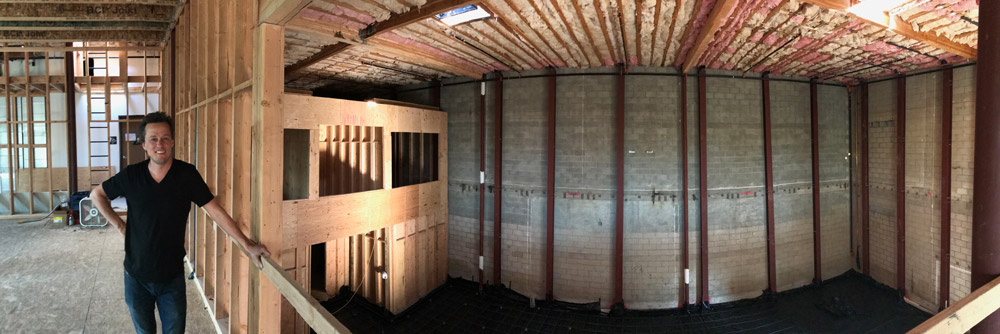
And tons of panels, tons of cabling, breakout boxes… We use a myMix system for headphones' feed and QSC amps to drive those…
I had a vision when I moved out here 20 years ago of a big, beautiful room to record music in and sort of having different stations, where I could bounce around from keyboards to strings to whatever, and that's kind of what it's become when we're not recording orchestra. I'm doing a show right now at Amazon called Carnival Row, and I'm using the Wurlitzer quite a bit in that—sort of almost as a synth. So we have the organ on and in place and mic'd most of the time. So I can just sit down, and then we've got a picture up on the stage as well.
We have two 800-pound pieces of glass in between the control room and the stage, so it's pretty much total isolation. And then, I did something that you don't see a lot, which people have really found useful. I have a second floor lounge with a viewing window down onto the stage, and I have speakers up there that feed the session into the lounge, and I have a TV where a picture of whatever we're scoring is.
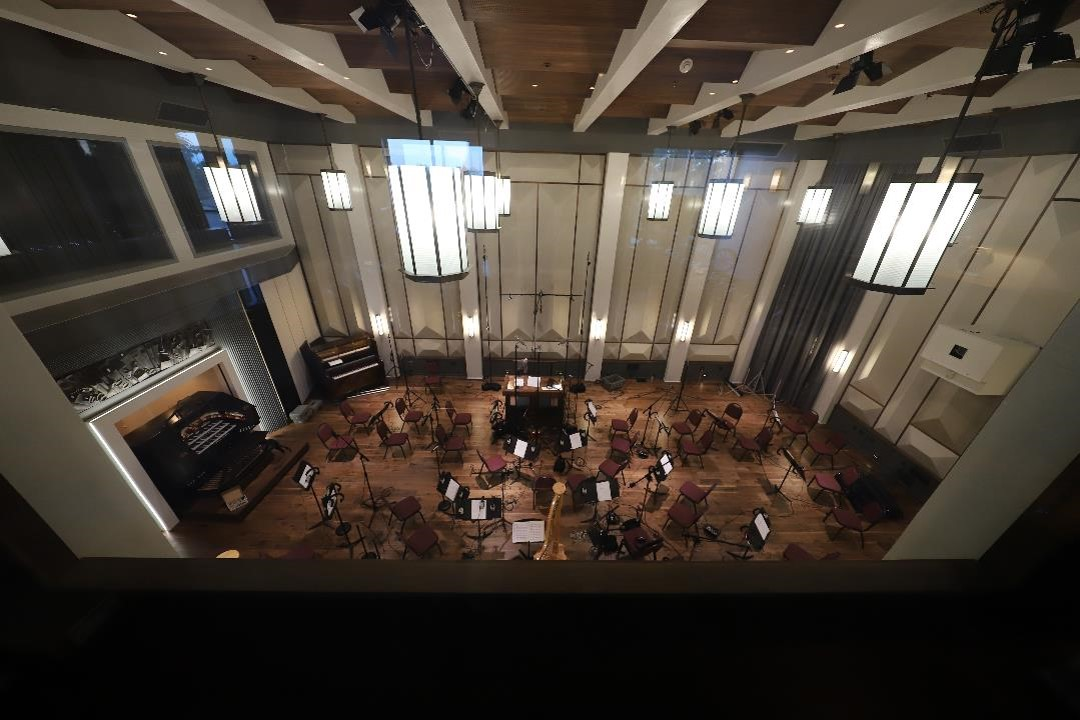
So, for example, when I was doing House With a Clock in Its Walls, all of the producers were up in the lounge hanging out, doing business—whatever they needed to do—and they could still monitor the session, get a great bird's eye view of all the players below, and yet also not be in the way of the work going on in the control room.
It's been a really great thing, because, you know, often times you need complete focus and silence in the control room, and people have shit to do. So it's been great from that standpoint, the focus, but it's also great because I can get way more people. There could be 50 people upstairs if they wanted, and we can keep the control room to a minimum.
The other cool feature is the back wall of the control room is a bookshelf—it's not your standard diffusion wall. I've never seen a diffusion wall, aesthetically, that I really liked. So I talked to my acoustician, Jay Kaufman, and I said, "Could we do a bookshelf with books?" And he said, "Sure." There's a place you can buy books by the yard, and you can even specify time period and the look of it, so we bought enough books to fill 66 percent of the shelves—different sizes, different shapes, they're pushed in, they're pushed out—and boom, we have this incredibly vibey diffusion wall that really kind of defines the whole room.
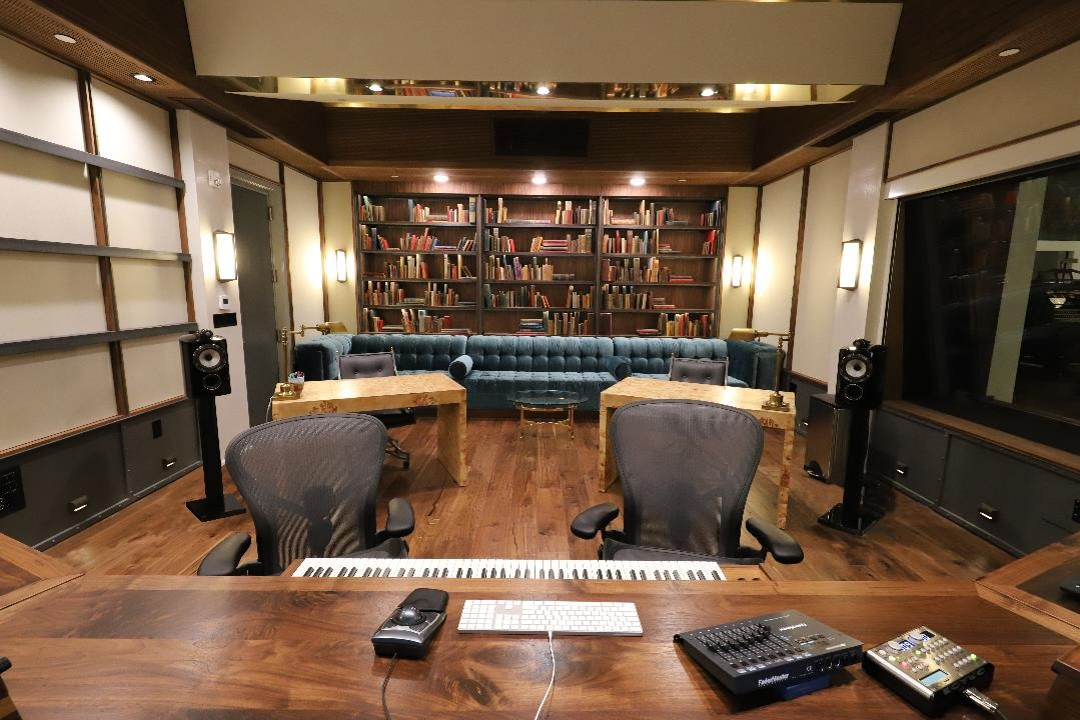
Is this where you're working each and every day? Are you renting it out to other projects?
It is, and I'm not currently. Danny Elfman was in the other day, but that was sort of a one-off. At least for the foreseeable future—I've put so much money, pain, energy into a place that is really about the way I work, and it's been most of a decade, sort of, coming up with this and seeing it built, so I plan on really enjoying the space myself for the time being. And if the odd, cool session comes in and I'm not working, then that's something I would consider.
But I don't have a console—I don't have like a giant mixing console—and that would be an issue for some engineers, even though, I think, many more engineers now are sort of open to the idea that maybe you don't need that anymore. The two teams of engineers I've had in so far, with some extra thought, were able to make things work pretty seamlessly. But it was one of the first things I wanted to throw away when I thought about designing the studio, was not to have some giant, behemoth analog console that basically only gets used for monitoring, which is what happens in a lot of these places.
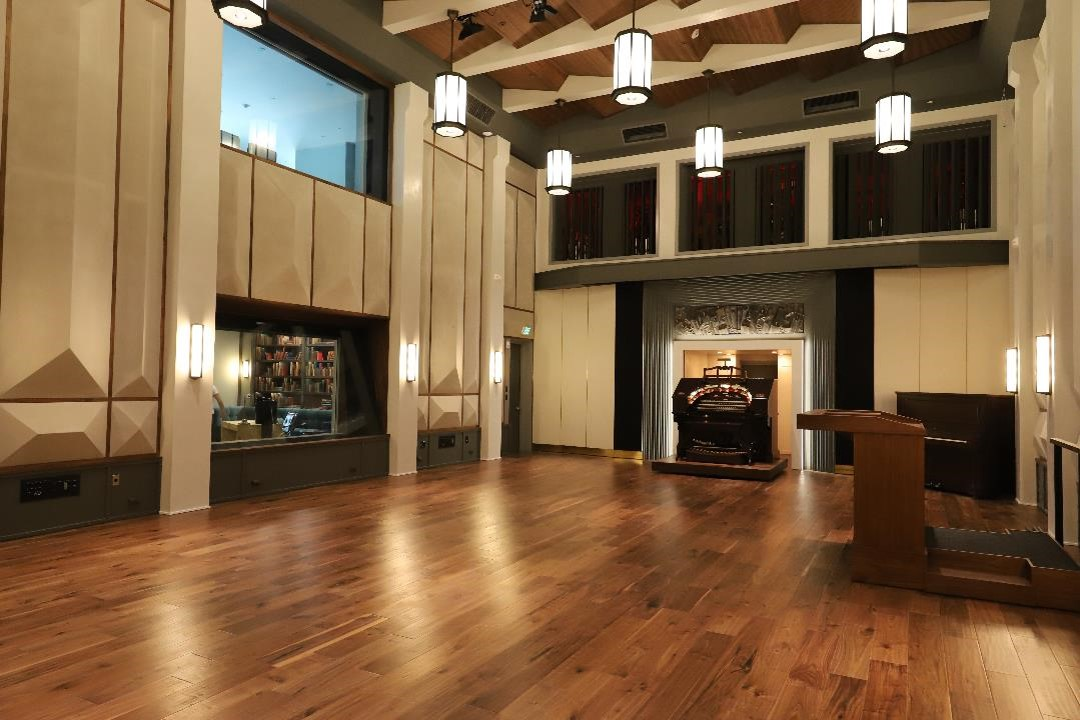
What's behind the name Bandrika?
That's the fictitious country where one of my favorite early Hitchcock films takes place in, called The Lady Vanishes. And I like that the name sort of ties it into film history in a cool way. Because that's really what it's about—the whole style of the building is Art Deco in the interior and that's all completely defined by the organ. You know, the organ was built in '28. So every frickin' toilet paper holder I picked out has to be compatible with the Art Deco vibe of the space. It really is like stepping back into time in a really cool way, and then getting to experience these instruments that most people are not familiar with.
